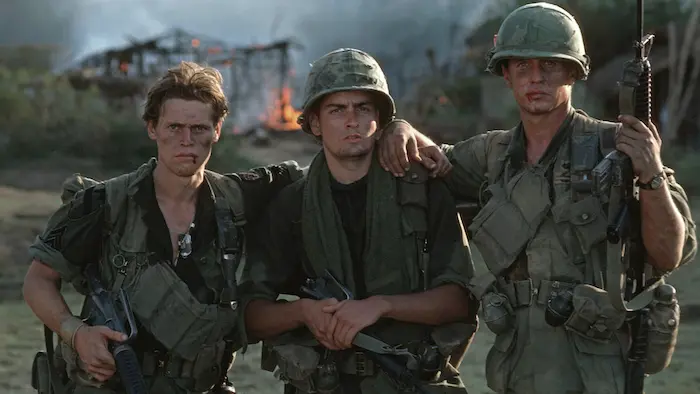Oliver Stone’s Platoon is a groundbreaking film about the Vietnam War. Released in 1986, it depicts the harsh realities and emotional struggles of soldiers during the conflict. One of the film’s most memorable aspects is its use of classical music. This article explores the classical music featured in Platoon, focusing on its impact and significance within the film.
I. The Role of Music in Platoon
Platoon is a war film that portrays the brutal realities of the Vietnam War. The movie is known for its raw depiction of the conflict and the psychological turmoil faced by the soldiers. Music plays a significant role in amplifying these emotions. The choice of Adagio for Strings was deliberate, as it complements the film’s somber and tragic narrative.
II. Samuel Barber’s Adagio for Strings
The Composer: Samuel Barber
Samuel Barber (1910-1981) was an American composer known for his evocative and emotional music. His works are celebrated for their lyrical qualities and ability to convey profound feelings. One of Barber’s most famous compositions is Adagio for Strings.
Composition and Characteristics
Adagio for Strings was originally composed in 1936 as the second movement of Barber’s String Quartet, Op. 11. The piece was later arranged for string orchestra and has become one of Barber’s most renowned works. The Adagio is characterized by its slow tempo, rich harmonies, and poignant melody. It is often associated with moments of mourning and reflection.
Impact of Adagio for Strings in Platoon
In Platoon, Adagio for Strings is used to underscore some of the film’s most emotional and intense scenes. Its haunting melody and somber tone perfectly align with the film’s themes of loss and suffering. The piece is featured prominently during key moments of tragedy, enhancing the emotional resonance of these scenes.
III. The Use of Adagio for Strings in Platoon
The Death of Sgt. Elias
One of the most significant uses of Adagio for Strings in Platoon is during the death of Sgt. Elias, played by Willem Dafoe. Elias’s death is a pivotal moment in the film. The music amplifies the scene’s emotional weight, reflecting the betrayal and sorrow experienced by the character. The slow, mournful strains of the Adagio underscore the senselessness of Elias’s death and the overall futility of the war.
The Aftermath of Battle
Adagio for Strings is also used in scenes depicting the aftermath of battle. The music helps to convey the profound sense of loss and devastation experienced by the soldiers. Its melancholic tone provides a stark contrast to the violence and chaos of the battlefield, highlighting the emotional and psychological toll of the war.
Reflections and Remembrance
Throughout the film, Adagio for Strings is used during moments of reflection and remembrance. The piece’s introspective quality aligns with the characters’ moments of contemplation about their experiences and the meaning of their sacrifices. It serves as a musical representation of the characters’ inner turmoil and sense of loss.
IV. The Universal Appeal of Adagio for Strings
Emotional Resonance
The inclusion of Adagio for Strings in Platoon adds a layer of emotional depth to the film. The piece’s ability to convey profound sadness and reflection enhances the audience’s connection to the characters and their experiences. It serves as a poignant reminder of the personal cost of war, complementing the film’s depiction of the Vietnam conflict.
Historical and Cultural Impact
Adagio for Strings has a long history of being associated with moments of national mourning and reflection. Its use in Platoon further cements its place as a powerful expression of grief and loss. The music’s historical and cultural significance enhances its impact in the film, making it a memorable and enduring element of Platoon.
V. The Lasting Impact of Platoon and Adagio for Strings
Influence on Filmmaking
Platoon is considered a landmark film in its portrayal of war and its use of music. The film’s integration of classical music has influenced how filmmakers use music to enhance emotional and thematic elements. The effective use of Adagio for Strings and other classical pieces in Platoon demonstrates the power of music to deepen the audience’s connection to the narrative and characters.
Continued Recognition
The association of Adagio for Strings with Platoon has cemented its place as a powerful and evocative piece of music in cinematic history. The piece continues to be associated with moments of grief and reflection, thanks to its prominent use in the film. Platoon’s successful use of classical music has ensured that these compositions remain influential and memorable.
See Also: Exploring Semi-Classical Music: A Fusion of Tradition and Innovation
VI. Conclusion
The use of Samuel Barber’s Adagio for Strings in Platoon is a masterful example of how music can enhance the emotional depth of a film. The piece’s mournful and anguished tones perfectly align with the film’s themes of loss, sacrifice, and the futility of war. Through this music, Platoon not only tells a story of conflict but also touches the soul, leaving a profound emotional impact on its audience. This powerful combination of music and narrative ensures that both Platoon and Adagio for Strings will continue to be remembered as powerful expressions of sadness and anguish in the face of tragedy.

